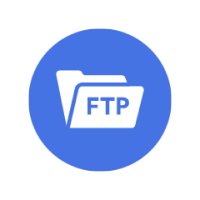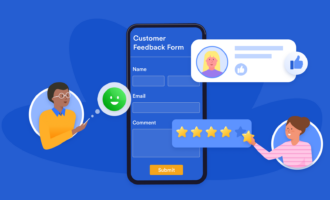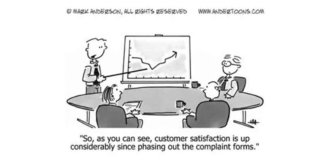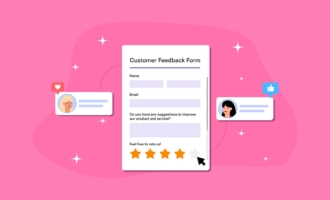10 customer feedback software options
Customer feedback can provide valuable insights about your products, services, shopping experience, and more. You can use these insights to make adjustments to your business that ultimately improve your bottom line. But you need a way to collect this feedback. Enter customer feedback software, which helps you gather customer feedback digitally.
When choosing a customer feedback solution, consider the advice of Nikola Baldikov, digital marketing manager at Brosix: “When choosing a customer feedback tool, I look for ones that will best serve a specific type of feedback method I’m after, such as online reviews or direct customer surveys.”
While you may have a few solutions in mind, it’s worthwhile to consider your options. Lucky for you, we’ve rounded up several below, each with its own unique feature set.
10 customer feedback software options
1. Jotform
Jotform is an easy-to-use form builder with hundreds of ready-to-use templates for many use cases, including customer feedback. The company serves many industries, like retail and healthcare (complete with HIPPA-compliant forms). Jotform’s prominent features include
- Prebuilt templates for collecting customer feedback you can modify to suit your specific needs
- Over 100 apps and integrations, such as PayPal, Slack, Google Calendar, and Mailchimp
- Mobile forms that let you collect feedback online or off
Not only does Jotform have a wide range of features, but most of them are available with the free Starter plan. If you need more forms or higher limits on form submissions, you can upgrade to one of three paid plans — or build your own custom pricing with an Enterprise account. Here’s a quick look at the paid plans, billed annually:
- Bronze. $34 per month for 25 forms, 1 GB of storage, 1,000 monthly submissions
- Silver. $39 per month, with 50 forms and 2,500 monthly submissions
- Gold. $99 per month. Features HIPAA compliance option, 100 forms, and 10,000 monthly submissions
- Enterprise. Custom pricing, unlimited forms and submissions, HIPAA compliance features, and more
While Jotform provides some outstanding features, you’ll have to consider whether it meets your needs. Here are some of the pros and cons of the platform:
- Pros
- The free plan includes the same functionality as paid plans.
- It offers a full suite of related products, including a database-spreadsheet tool, a report builder, and no-code apps.
- It features a mobile app and kiosk mode option for on-the-go feedback collection.
- Cons
- It isn’t a dedicated customer feedback product.
- Non-Enterprise accounts are limited to one user.
Jotform also has an average rating of 4.7 out of 5 stars on both G2 and Capterra.
Maria R., an administrator who reviewed Jotform on Capterra, is a fan: “[Jotform is a must have resource for business expansion. The ease of form creation and implementation is great. I love the ease of sharing the forms while having the ability to embed on our website without any hiccups…. Customer service is great.”
2. BirdEye

Birdeye is an online review generation and reputation management solution that lets you monitor reviews, social channels, and surveys. It offers a three-tier pricing system. Prominent features include
- Aggregated reviews from top review sites in a single dashboard
- Automated review requests after customer appointments or purchases
- Widgets that highlight reviews to place on your website
While Birdeye’s reputation and feedback management software may be considered industry-leading, the price point for this tool may be too high for some.
Birdeye has three available plans. Pricing is available upon request.
Let’s take a look at the full picture of what Birdeye has to offer:
- Pros
- Industry-leading reputation management
- Comprehensive online reviews tool
- Streamlined customer interactions
- Cons
- Slow user interface
- Lack of access to essential tools with less expensive plans
- Fewer integration options
For many, the disadvantages don’t seem to be a problem. Birdeye is still one of highest-ranked reputation management tools available, with a star rating of 4.8 out of 5 on G2 and 4.7 out of 5 on Capterra.
Anna B., a small business owner, left a glowing review of Birdeye’s capabilities on G2: “Birdeye is so simple to use and I love that I can text clients from our computer and everyone on the team can see all incoming and outgoing messages in one platform. Getting reviews is so easy, especially with their automated follow up!! Everyone who calls in that found us online raves about all our five star reviews!”
3. Podium

Podium is an interaction management platform for increasing local business. It uses messaging to interact with prospects and customers and to get feedback. Features include
- Integrations with Google, Facebook, and industry-specific review sites
- Automated review invitations to customers
- Reporting tools to collect reviews across integrated channels
While Podium may be designed to help small businesses grow, it comes at a higher price point. However, pricing does include some impressive features that could make the cost worth it. Here’s an overview of the plans:
- Core. $399 per month. The Core plan includes unlimited contacts, online review capture, a website chat widget, hundreds of integrations, and payment processing.
- Pro. $599 per month. Pro includes everything in the Core plan, plus additional features like automated lead routing, automated AI review responses, and advanced customer segmentation.
- Signature. Custom pricing. The Signature plan includes everything in the Pro plan, plus an advanced reporting add-on, custom automations, and discounts on features like bulk messaging and desk phone hardware.
With all these features, Podium is the top choice for many and is often directly compared to Birdeye. This platform does have a few gaps in service. Here are some of the top pros and cons for this customer feedback software:
- Pros
- Unlimited number of contacts included with all plans
- User-friendly
- Centralized interface
- Cons
- More expensive than alternatives
- Still growing and adding features
Kevin C., a vice president of marketing in the real estate industry, shared a mixed review of Podium on Capterra: “The ease of use is great, I love taking the conversation from the website to texting, and it’s great for that. It also makes it pretty easy to request reviews, and so that is great.” However, he also had some concerns about price: “It feels really expensive to me. At this point I might be able to get similar functionality for significantly less money.”
4. Wootric

Focused on providing a modern approach to voice of customer (VoC) data collection, Wootric is customer experience software for collecting the key three feedback scores: Net Promoter Score (NPS), customer satisfaction or product satisfaction score (CSAT/PSAT), and customer effort score (CES). Some key features of the platform include
- Multichannel customer feedback collection surveys
- Machine-learning–driven analytics insights
- Direct integrations with top software
For businesses focused on the top customer feedback scores, Wootric’s platform may be a perfect fit.
While it’s trusted by some larger organizations like Zoom, there are also some drawbacks that could take this solution out of the running during your research process. Here’s a look at its benefits and disadvantages:
- Pros
- Use of AI in analytics
- Real-time data gathering
- Easy setup
- Cons
- Limited number of direct integrations
- Pricing only available upon request
- Some users report limitations in the reporting features, like difficulty filtering data
Wootric, while well-established, has only a few reviews on both Capterra and G2. However, the reviews that exist are relatively positive. With only 12 reviews on Capterra, it has a 4.6 out of 5 star rating.
Here’s what Vinicius A. had to say about Wootric: “Wootric is very useful for our Customer Success team. They have the control of the NPS, and use the info collected to contact customers in order to understand what they are really missing, and how we could help in a more efficient way. Since we [started] counting the NPS, this [action] has helped us to improve more, and our NPS keeps going up.”
5. Zonka Feedback

Zonka Feedback is a customer feedback software dedicated to creating an effective feedback loop between you and your customers. Specializing in the collection and analysis of feedback data, key features of Zonka include
- Multichannel customer experience and survey software
- In-depth feedback analysis and reporting
- Feedback response and action tools
Here’s what you might pay to add Zonka to your workflow.
- Starter. $49 per month. This plan includes three users and three external agents with access to 2,500 email or SMS sends, 10,000 sessions or 1,000 MTUs per month, and two device licenses — plus a suite of features.
- Professional. $99 per month. This plan includes five users and 10 agents, with four times the sends and five times sessions, along with double the device licenses and even more features.
- Growth. $199 per month. The Growth plan allows 10 users and 25 external agents. On top of a wider variety of features, plan limits increase to 50,000 emails or SMS messages per month, 100,000 sessions or 10,000 MTUs per month, and 10 device licenses.
- Enterprise. Pricing for the Enterprise package is customized according to your needs. This customization also extends to the number of users you can have and other key features.
Zonka has a wide range of features to choose from. Here are some top pros and cons.
- Pros
- It’s a dedicated customer feedback tool.
- It offers access to all survey channels at every pricing tier.
- It offers offline survey capabilities as well.
- Cons
- No free version (though it does offer a 14-day free trial)
- Some customers report that the user interface design could be improved.
Zonka Feedback is highly rated on both Capterra and G2 — earning 4.9 and 4.7 star ratings respectively.
Here’s what user Julien T. has to say about this tool: “The survey builder is easy to use and has many pre-made templates. There are many options to distribute the survey, including offline (device kiosk) mode. This makes it a great tool not just for internet businesses but also for brick and mortar / traditional businesses. If you have several physical locations, Zonka even has location reporting (with appropriate plan subscription).”
6. Qualtrics

Qualtrics is an experience management software featuring a wide range of solutions for multiple industries, purposes, and positions. Some of its top software products include
- Customer-focused experience data collection and analysis
- Internal engagement and satisfaction measurement
- Marketing strategy and research development tools
With its wide range of products, each priced separately, it’s difficult to pin down an exact pricing structure for this specific product. For exact pricing, you’ll need to schedule a demo.
Here are a few other key considerations:
- Pros
- It’s an excellent survey-building tool.
- Great customer service
- Highly flexible
- Cons
- Can be difficult to customize
- Expensive
- Steep learning curve
Qualtrics tools are evaluated separately on review sites, making it difficult to find a singular rating of Qualtrics as a whole. However, its Customer Frontlines product has a 4.7 star rating on Capterra and its core product is rated 4.2 stars on G2.
Hannah D., a clerical assistant in the education management industry, has this to day about Qualtrics’ Customer Frontlines product: “Qualtrics can be customized in basically an infinite amount of ways. My institution uses qualtrics for everything from very short to very long surveys, research studies, and more. Also, users can customize it so that it has their businesses logo/color. It can be 100% personalized.”
7. Qualaroo

Qualaroo is a customer feedback software built around collecting real-time insights, rather than relying on traditional email survey methods. Separating itself from competitors, Qualaroo’s tools are all about collecting feedback in the moment through on-site, in-app, and email surveys. Some of the key features include
- Customer experience management tools
- AI-powered sentiment analysis
- Website, user experience, and product feedback collection
Qualaroo offers two sets of plans, one for omnichannel feedback and one for email surveys:
Omnichannel
- Free. Includes 50 user responses per month.
- Business. $19.99 per month per 100 responses (when billed annually). Provides users with unlimited nudges (or web intercept surveys) and responses, as well as access to a variety of professional templates.
Email surveys
- Free. Includes 50 user responses per month.
- Business. $9.99 per month per 100 responses (when billed annually)
For those looking for a real-time, contextual feedback tool, Qualaroo may be your best choice. Here are some of its advantages and disadvantages:
- Pros
- Immediate, real-time feedback
- User-friendly templates
- AI-sentiment analysis through IBM’s Watson
- Cons
- Lack of design customization options
- Some users report that the dashboard design could be improved.
Qualaroo has a 4.7 star rating on Capterra and a 4.3 star rating on G2.
Ashish G., founder of Blink Click Media, had this to say about his experience with Qualaroo: “While working with the tool, we liked how simple and complex it is at the same time. We were able to create simple, straightforward surveys and add complexity such as branching logic to them to increase our ability to go deep into the feedback when needed. Not to mention the amazing question templates, AI-powered IBM Watson Sentiment Analysis, Advanced targeting based on users’ actions, time, etc.”
8. SurveyMonkey

One of the most popular marketing tools in use today, SurveyMonkey is a survey builder designed to help you collect feedback from customers, clients, and even your internal team. Some of its key features include
- Online form-builder software
- More than 100 integrations
- Market research tools
SurveyMonkey has multiple plans for both individuals and teams. Here’s an overview of its plans for individual users:
- Standard Monthly. $99 per month. This package is specifically for those who to pay monthly rather than for a year at a time. However, in five months, it becomes more expensive than the annual cost of the next highest package.
- Advantage Annual. $39 per month, billed annually. Advantage Annual offers all the features of the Standard Monthly plan, plus more, at a fraction of the cost. It’s a relative no-brainer for those looking to use SurveyMonkey for longer than four months.
- Premier Annual. $119 per month, billed annually. This plan features the full extent of SurveyMonkey’s available tools. This includes unlimited surveys, forms, form fields, and more.
Although its survey capabilities are relatively effective, not everything about this tool works for every user. Here are some of the pros and cons to help you decide if SurveyMonkey suits your needs:
- Pros
- Quick survey building
- Custom dashboards
- User-friendly interface
- Cons
- Can be expensive
- Limited customization options
Overall, SurveyMonkey is highly rated by users. It currently ranks as one of the top survey tools available, with a 4.6 star rating on Capterra and a 4.4 star rating on G2.
Here’s what Quality and Regulatory Manager Cole R. had to say about SurveyMonkey in their Capterra review: “Overall, we are very pleased with how SurveyMonkey helps us successfully tackle a wide array of tasks. The product is so incredibly customizable which allows it to be reconstructed to help us with everything from weekly surveys to determine lunch orders for employees, to satisfaction surveys, to focus group surveys, to product questionnaires, and more. The greatest value SurveyMonkey provides any business is time-savings. The product makes survey creation, distribution, results tracking and collection, and analyzation quicker than any manual labor or combination of other softwares.”
9. Nolt

Nolt is a road map solution that allows users to suggest and vote on features they’d like to see added to a product or service. Priced per board, features include
- Integrations with Jira, Trello, Slack, and more
- Anonymous voting for users
- Single sign-on with connected user accounts
Nolt’s helpful features aren’t the only reason it’s a top choice for many in the customer feedback space. Its pricing plan is also affordable compared to its competitors’. All plans include an unlimited number of users, content, and admins, which is a major plus. Here’s what you can expect to pay for Nolt:
- Essential. $29 per month, billed annually. This plan offers users access to one board that can be customized to fit their needs, along with a variety of other features.
- Pro. $69 per month, billed annually. The Pro plan ups users’ board count to five, with access to even more features on top of the existing Essential package — including several additional integrations.
- Enterprise. Enterprise packages are custom-priced based on needs, but include an unlimited number of boards in addition to all the features in the Essential and Pro plans.
Here are some of the top features and drawbacks, according to reviewers:
- Pros
- Easy to use
- Excellent customer service
- Fast and reliable
- Cons
- Lacking integrations
- Difficult single sign-on process
- Not as advanced as other tools
Nolt may still be fighting to compete with companies like Trello, but it has started to gain traction online as an effective tool in its own right. Though it has fewer reviews, it has a 4.9 star rating on Capterra and a 5 star rating on G2.
Tim S., a computer and network security CEO, had this to say about his experience with Nolt: “I have been using Nolt.io for several months now and have been highly impressed with its level of service and functionality. One of the most beneficial aspects of Nolt is its user-friendly interface, which makes it easy to access and edit large amounts of data. The built-in analysis tools and visualization options are also handy for quickly gaining insights into suggestions.”
Uku Täht, CEO of Plausible, uses Nolt to develop a collaborative road map with customers. “It makes it much easier to prioritize work when you know exactly what your users want. I also love the fact that we can close the loop and notify everyone who requested a feature when it goes live.”
10. Email
While customer feedback software has come a long way and offers users many helpful capabilities, sometimes keeping things simple — and free — is your best bet.
“We also use good old-fashioned email,” Täht says. The team uses a welcome email that asks each user why they signed up. There are also automated, transactional emails going out to users at specific points in their customer journey to solicit feedback.
“For example, if a user doesn’t manage to set up their account completely, we send an email asking what stopped them from integrating with our solution, and how we can help. We’ve received a lot of good feedback from just sending personal emails at the right time.”
The right customer feedback management software can help you get the insights you need to continually improve your business. Explore these 10 options to see which might be a fit for your needs.











































































Send Comment: